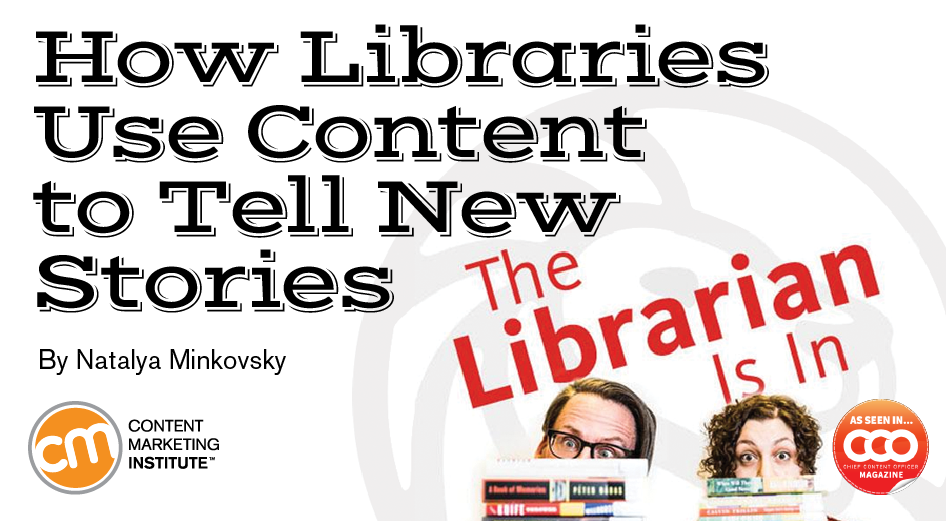Author: Natalya Minkovsky / Source: Content Marketing Institute

I never gave much thought to library marketing until I met Angela Hursh, content team leader in the marketing department of the Public Library of Cincinnati and Hamilton County. Going to my neighborhood library to browse and check out books is one of my favorite things to do; I’ve been visiting on a regular basis for as long as I can remember. As a dedicated bookworm, I took for granted the effort of marketing the library does to reach people for whom visiting isn’t second nature.
While my personal interest is book-centric, libraries offer much more to the local community, of course. At the library you can learn a new language, get help with your income taxes, or use a 3-D printer. Parents can bring their kids for story time. Teens have a safe, comfortable space in which to do their homework. Senior citizens can take computer classes.
This is one of the biggest challenges for libraries today: updating people’s perceptions of libraries as merely buildings full of books. Perhaps even more thorny for their efforts is that it’s not clear exactly what libraries should aim for as they evolve to meet changing community needs.
Pew Research Center shows that Americans are divided on the question of how books should be treated at the library: 24% support the idea of moving books and stacks to make way for more community- and tech-oriented spaces, while 31% say libraries should not move the books.
As marketers, we live by the mantra “you can’t be all things to all people.” But that’s really what a library does, says Hursh. Modern libraries are book repositories, resource centers, and gathering spaces – doing everything from carving maker spaces for hobbyists and hosting equipment rental programs so that community members can “borrow” items like sewing machines or hand tools, to setting up co-working spaces for virtual workers.
When it comes to promoting this vast variety of library activities and resources on social media, the Public Library of Cincinnati and Hamilton County has experimented with content for each platform, from Instagram to Pinterest to Snapchat, setting goals for each one and choosing to focus on those that prove to be most effective. “We have to be on all the platforms,” Hursh says, “but we don’t want to burn ourselves out.”
When Hursh joined the team, the library used some social media platforms but had no overarching content marketing strategy for them. Now, the team is constantly evaluating and evolving how it uses social media to reach the local public.
“Pinterest surprised me,” says Hursh. After adding the platform into the mix, the team saw Pinterest drive 15 to 25% of web traffic, mostly from posts about new books and movies. LinkedIn was also surprisingly popular as a channel; audiences there look for career and higher education resources from the library.
Storytelling through content marketing and audience personas
“We work in a building full of stories,” says Hursh. Therefore, content marketing makes a lot of sense for libraries that want to attract patrons. But marketing library collections and services is much more nuanced than letting people know about the great books and fun events at the library.
When Hursh talks about telling stories, she means stories about the history of the library, stories about the librarians, and stories about the patrons themselves. All locations have their own personality shaped by their neighborhoods and demographics, Hursh explains. Her team creates content specific to the audience of each branch, as well as more global content for the library system. Social listening helps the team come up with stories, such as the one about a father and son who made it their mission to visit all 41 locations of the Public Library of Cincinnati and Hamilton County.
In addition to targeting its content marketing by location, the Cincinnati-area library sometimes works with more specific targets. Book Hookup is a service through which the library staff provides personalized reading recommendations to customers based on their reading interests. Hursh’s team was responsible for naming and promoting the program to the public. Working with OrangeBoy, an Ohio-based company that developed marketing personas based on library card usage data, Hursh and her team create email marketing messages based on those behavior-based user personas. The targeted email marketing has been wildly successful, she says. The…
Audience Team
The digital audience insights you need to build, manage and market to your digital audiences.

